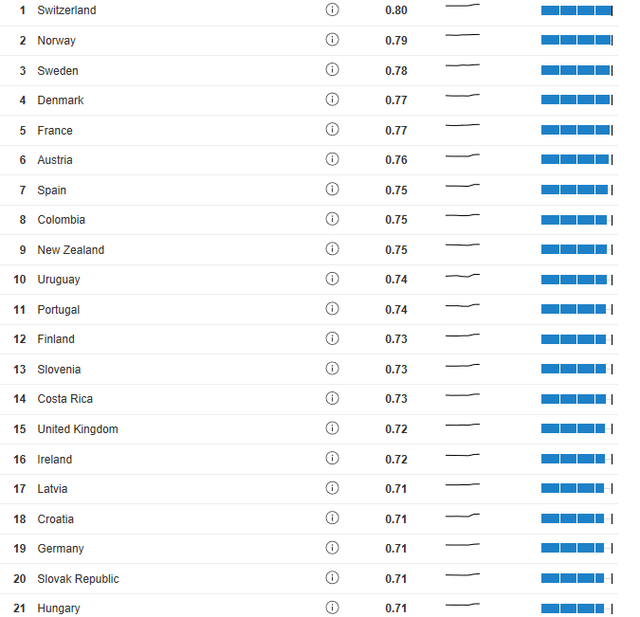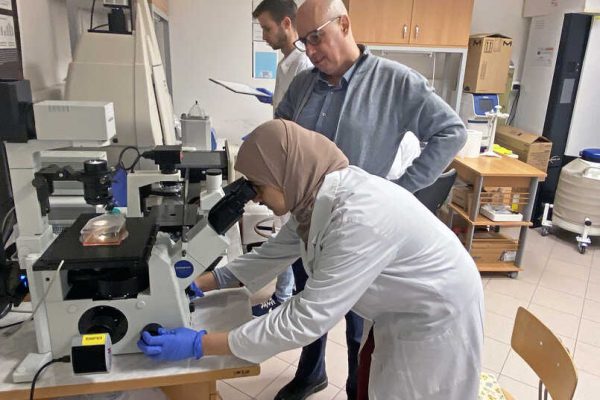Hungary is ranked 21st on the World Economic Forum’s global Energy Architecture Performance Index (EAPI) 2017. With a score of 0.71, Hungary finished before developed countries such as the Netherlands (33), South Korea (43), Japan (45), the United States (52) and Australia (53) or China (95). The report’s general conclusion is that the gap between those at the top and the bottom of the rankings is wide and keeps on growing.
The report, developed in collaboration with Accenture Strategy ranks 127 countries based on their ability to provide energy across three dimensions of the “energy triangle”. It finds that the highest performers, which are primarily smaller countries and advanced economies, can overcome constraints if supporting policies are in place.
“The results of the global Energy Architecture Performance Index (EAPI) 2017 highlight key trends in the energy transition moving towards more sustainable, affordable and secure energy systems around the world, as well as the challenges countries continue to face, individually and as cohorts. Looking back at five years of data from the EAPI, this report also distils insights from countries that have shown significant improvements in performance or remained consistently high performers,” the WEF said.
The top 20 performers on the 2017 index represent a diverse mix. European countries lead the index, with Switzerland (1st, 80%), Norway (2nd, 79%) and Sweden (3rd, 78%) taking the top spots. But other regions also hold high-ranking positions: Colombia (8th), Uruguay (10th) and Costa Rica (14th) are the highest-ranked Latin American nations, while New Zealand places 9th.
Hungary’s 21th place may seem surprising, considering that the country’s dependence on energy imports is relatively high, and because it finished well before a host of countries that are much more developed economically. At the same, it casts a shadow on this performance that Austria (6th), Slovenia (13th), Latvia (17th), Croatia (18th) and Slovakia (20th) in the region all ranked higher.

As regards the components of the index, Hungary scored the highest in the electrification rate, a score of 100, although the 1st position and the score is shared with another 68 countries, including all of Hungary’s neighbours. The country also fared well in terms of energy efficiency in the transport sector.
Moreover, in terms of the average fuel economy of passenger cars, Hungary is ranked 2nd, on a tie with 15 countries, finishing before Italy (16th), France (17th), Germany (20th), the United Kingdom (21st) or the United States (74th). In the CEE, Austria, Slovenia and Slovakia also got good scores in this respect, whereas the other neighbouring countries were behind Hungary, according to the WEF.
Hungary is ranked 13th in terms of the diversity of total primary energy supply (TPES), before several developed countries, but Romania (1st), Slovakia (2nd), Slovenia (3rd) and Austria (10th) of the neighbouring countries are even higher on the list.
Hungary is ranked worse than average (89th) as regards the fuel imports component, although it has still beaten Slovakia, Ukraine, Croatia and Slovenia in the region. The worst ranking was achieved in the net energy imports category (96th), where only Slovakia (98th) and Austria (101st) in the region are behind Hungary in this respect.
Scores (on a scale of 0 to 1) and associated rankings are calculated for each of these indicators. These are then aggregated based on defined weights to calculate a score and ranking for each sub-index and for the EAPI overall.












